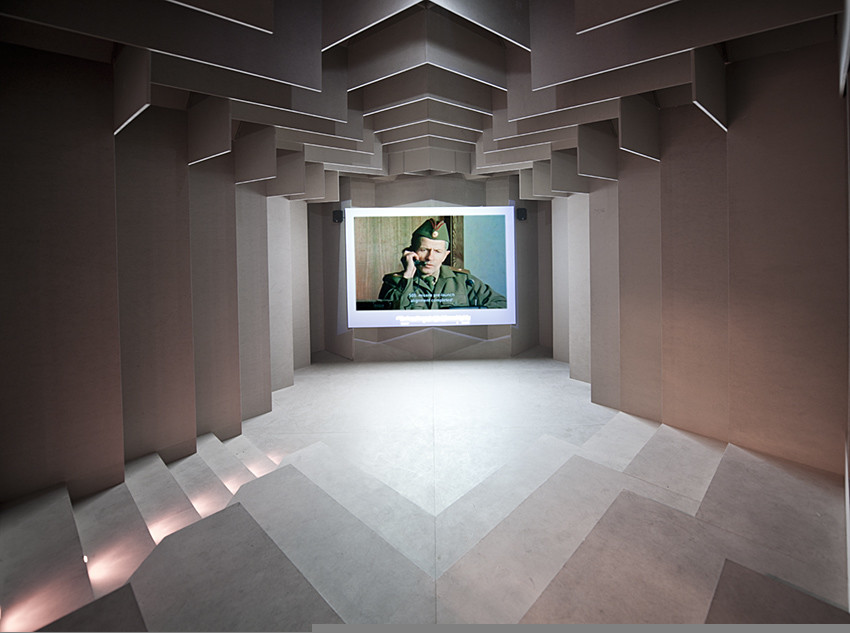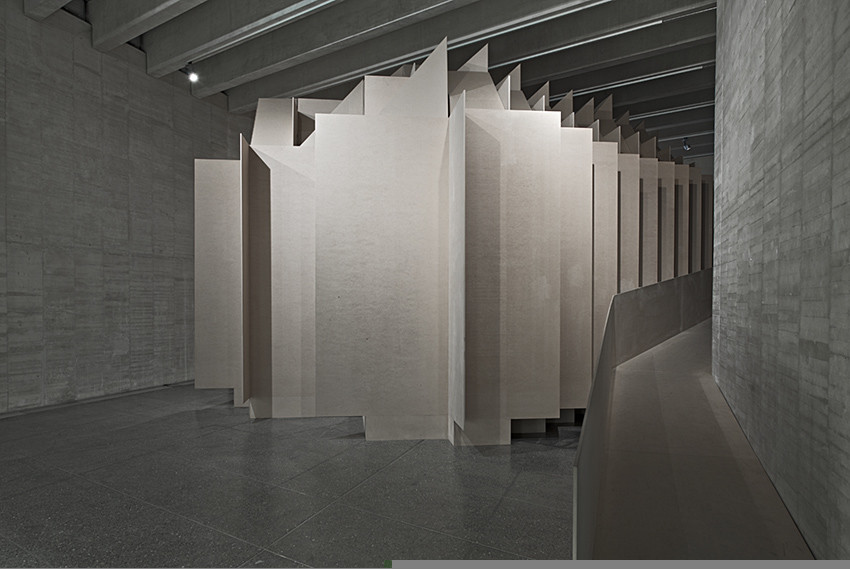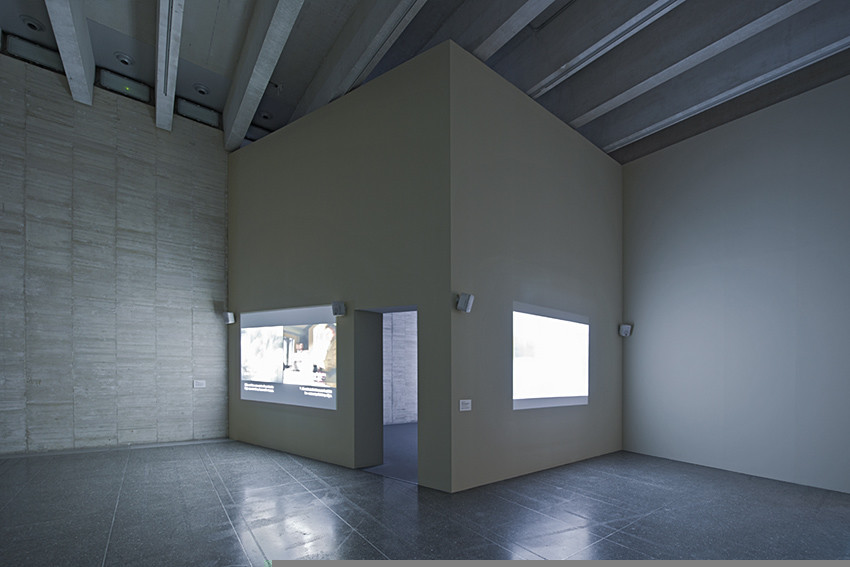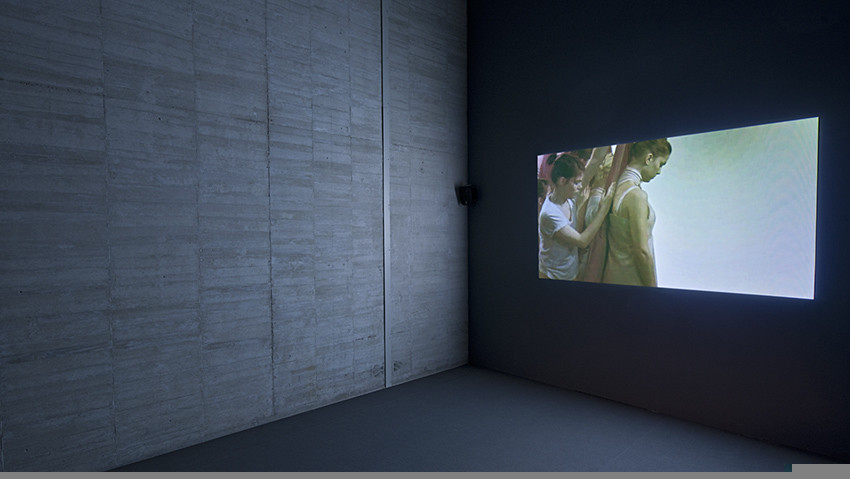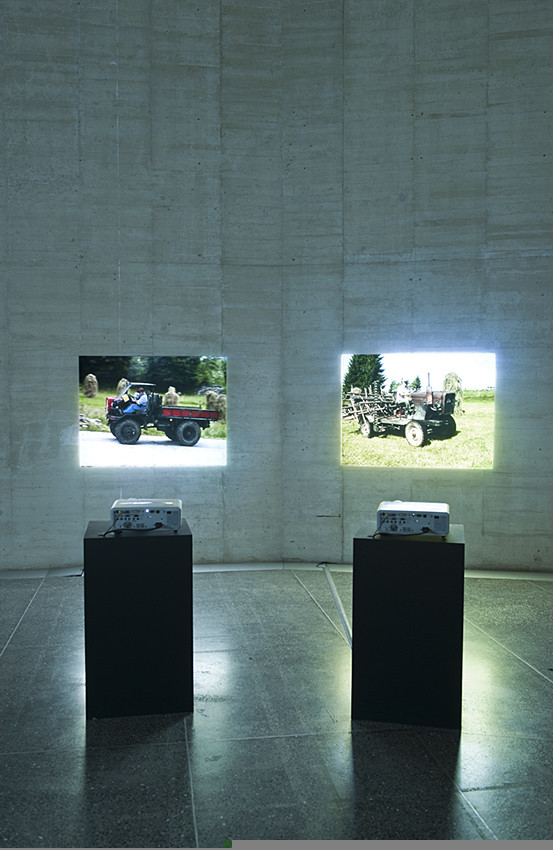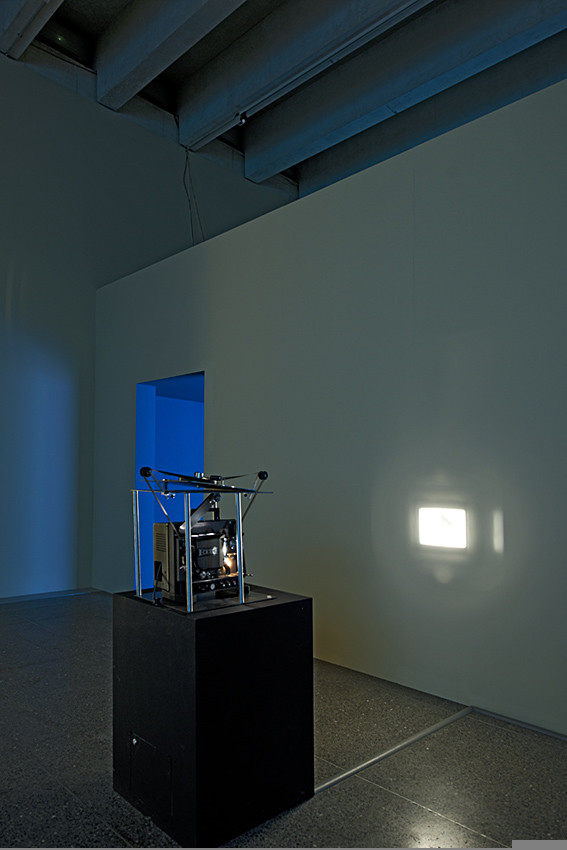One Sixth of the Earth
One Sixth of the Earth: Ecologies of Image is
an overview of the artistic ecosystem in Eastern European countries following the disappearance of the Soviet Bloc. Curated by the art historian and professor at the
Royal College of Arts Mark Nash, the show is the result of a process of research focused on the conceptual framework of "ecology" understood as the totality of human, societal and environmental ecologies, as Félix Guattari developed in his essay The Three Ecologies (1989).
A project conceived specifically for MUSAC, the exhibition pays special attention to work that does not immediately embrace the promises of a post-perestroika global, but struggles with the various tensions and paradoxes of the local. One Sixth of the Earth (1926) is also the title of a 1926 film by Dziga Vertov, the Soviet Union's most experimental exponent of documentary cinema, which intended to present a utopian vision of the multiracial and multicultural potential of Soviet society. The exhibition at MUSAC makes emblematic reference to this title film as an indication of the potential and the aspiration of artists and curators from this major region of the world. The moving image was the major art of the Communist period, but it has also emerged as a major force for artistic critique. That's why, in his process of selection, Nash centred on the use of the image as a language of expression, selecting artists who work primarily with the moving image, though also including other media such as photography and installation.
One Sixth of the Earth: Ecologies of Image builds on and expands the results Nash obtained in Re-imagining October, a prior project which he curated in London in 2009 at Calvert22. That said, while the first project was focused on the interrelations and interconnections of art after 1989 produced in the Soviet Union with respect to its cultural and historical past, for MUSAC Nash has adopted a broader scope of action and study in the conceptual frame of "ecology", borrowing from Felix Guattari's essay 'The Three Ecologies 1', where he argued that the ecological dilemmas the world is currently facing can only be addressed by viewing human, societal and environmental ecologies as a totality. Guattari also argued that art is one way of bringing these three strands together and that artists can be at the forefront of a new synthesis, and that we can learn from the experience of art in ways that can make our lives more balanced and less socially and ecologically disruptive.
The exhibition curator believes these postulates are particularly apposite for the countries that surfaced from the Eastern Bloc and the Soviet Union after 1989. The utopian aspirations of the erstwhile socialism were cancelled out by the dystopian experience of survival in the economically and ecologically damaged societies that emerged. The aim of One Sixth of the Earth: Ecologies of Image is to present exciting voices from the period following the disintegration of the Soviet Bloc, and to balance those who are well known and widely exhibited with others who have had much less
exposure to date.
Within the overall ecological metaphor invoked in the title, this exhibition engages a number of contradictory and at times completely opposed themes, which have to do both with the trajectories of the individual artists involved but also the widely differing histories of their respective countries of origin and/or where they are currently artistically active. One Sixth of the Earth: Ecologies of Image embraces questions like cultural nomadism, now that artists are better able to move around in search of the best place for training and practice, in some cases-as in the Asian republics-echoing the
nomadism of their fellow countrymen. It is also concerned with the emergence of strong local art scenes, often building on networks established in Communist time, which may
present artists with difficult choices of advancing their careers at home or abroad.
Western fine art discourse was initially circulated in samizdat form, so both the Soviet and Eastern Europe art worlds were heavily networked well in advance of the internet revolution. The exhibition also addresses issues such as the rise of new nationalisms, with their attendant xenophobia and racisms which have affected most countries in the region; as well as issues of gender and sexual identity, in some cases tying in with the progressive cultural politics of the previous, Communist generation.
At the centre of our exhibition is a new commission by Tobias Putrih who has designed a viewing space inspired by the work of Polish architect and theorist Oskar Hansen, whose concept of the Open Form helps define the sensibility of generations of contemporary architects and artists, as one in which the spectator becomes an active participant in the exhibition process. A second commission by Société Réaliste consists of a new typeface 'Monotopia 1989' a date that marks the founding of dissolution of the Communist bloc.
The works presented in the first room of the exhibition (Exhibition Hall 4.2) explore the resonances of cultural and historical past in our contemporary present - Dimitry Gutov
asks how to read the landscape of contemporary Moscow - it is upside down, or are our ideas equally misplaced? David Maljkovic uses the device of science fiction to ask a similar question about Zagreb. Little Warsaw and Irina Botea refer to the archive to confront past idealism with the banality of the present-day. Yevgenia Belorusets documents the opacity of power in post Soviet Ukraine. Victor Alimpiev hints at the weight of symbols from the past. Dan Acostioaei evokes the fetishism of commodities, Christina Norman and Flaka Haliti present us with artistic interventions against Xenophobia and genocide.
The Reading Room presents a number of artist book projects, and juxtapose two kinds of nature rambles: Community Art together with the veteran artist Tomislav Gotovac - who died last year-and Zbigniew Libera's more sexually ambivalent exploration of a similar theme.
In Hall 4.1 Tobias Putrih's cinema hosts a range of narrative works more suited to a traditional cinematic presentation where the audience can follow from beginning to end. Mircea Nicolae intertwines personal and architectural histories from Bucharest. Anri Sala interrogates his mother's involvement with the Albanian Communist party. Matei Bejanaru reminds us of the literary culture of Romanian factory workers, Stefan Constantinescu - the iconic history of the Dacia that rivalled the East German Trabant in South Eastern Europe. Deimantas Narkevicius revisits cold war era nuclear bunkers. Pavel Braila presents the primitive railway technologies connecting former West and former East. Driant Zeneli exemplifies the ambition of younger artists to 'touch the moon'. In this hall we also present the project of Andrej Zmijewski that explores different kinds of political and social gatherings as a contemporary ethnography of democratic forms.
Hall 3.1 presents work which deals with issues of gender and sexuality: Anna Molska takes a fetishistic approach to the male body; Almagul Menlibayeva presents her body as an object of fascination while exploring the ecological devastation of the Aral Sea in Kazakhstan; The Factory of Found Clothes' operatic documentary presents dilemmas of present day motherhood no longer protected by the Soviet welfare state; Milica Tomic provocatively explores the resonance of Karl Marx's Das Capital for moneyed collectors of today; Mircea Cantor echoes Alimpiev's interrogation of symbols.
Halls 5 and 6 include some explicitly ecological works: Mona Vatamanu & Florin Tudor show Roma children playing with the down of willow seeds; Ghenadie Popescu explores the pollution of the river Bic in Moldova; Alexander Ponomarev deploys the resources of the Russian navy to erase an island from the map. Lukasz Skapski presents the ingenuity of Polish famers, faced with a shortage of spare parts to invent their own agricultural machinery. Adrian Paci echoes Walt Whitman's 'body electric'. Gulnara Kasmalieva & Muratbek Djumaliev celebrate the resilience of nomadic women traders. In conclusion, using the formal devices of experimental film-making, Andrej Zdravic explores the pristine beauty of Solvenia's river Soča (also the site of some of the fiercest fighting in the First World War).
Over recent years several exhibitions have thrown a spotlight on Eastern European work, for instance Ostalgia (2011) at the New Museum in New York; Les Promesses du Passé (2010) at Centres Georges Pompidou in Paris which focussed on the utopian dimension of much Eastern European art during the socialist period; and Modernikon (2011) organised by the Fondazione Sandretto in Turin and Venice, presenting a survey of contemporary Russian work. The exhibition at MUSAC pays special attention to work that does not immediately embrace the promises of a post-perestroika global, but struggles with the various tensions and paradoxes of the local.
Artists: Dan Acostioaei (Romania), Victor Alimpiev (Russia), Matei Bejenaru (Romania), Yevgenia Belorusets (Ukranie), Irina Botea (Romania), Pavel Braila (Moldova), Mircea Cantor (Romania), Community Art/ Aleksandar Battista Ilic, Ivana Keser, Tomislav Gotovac (Croatia), Stefan Constantinescu (Romania), Factory of Found Clothes (Russia), Dimitry Gutov (Russia), Flaka Haliti (Kosovo), IRWIN (Slovenia), Gulnara Kasmalieva and Muratbek Dzumaliev (Kyrgyzstan), Zbigniew Libera (Poland), Little Warsaw (Hungary), David Maljkovic (Croatia), Almagul Menlibayeva (Kazakhstan), Anna Molska (Poland), Deimantas Narkevič ius (Lithuania), Mircea Nicolae (Romania), Kristina Norman (Estonia), Adrian Paci (Albania) , Alexander Ponomarev (Ukranie), Ghenadie Popescu (Moldova), Tobias Putrih (Slovenia), Anri Sala (Albania), Lukasz Skapski (Poland), Société Réaliste (France), Milica Tomic (Serbia), Mona Vatamanu & Florin Tudor (Romania), Andrej Zdravic (Slovenia), Driant Zeneli (Albania), Artur Zmijewski (Poland).
Curator : Mark Nash
Coordinators: Helena López Camacho, Eszter
Steierhoffer

